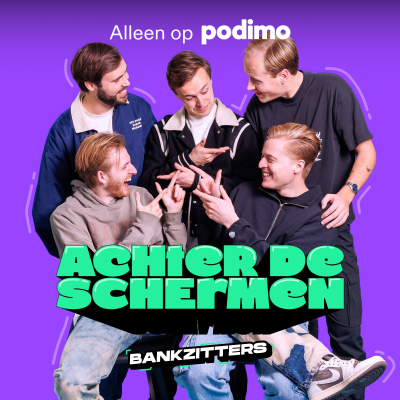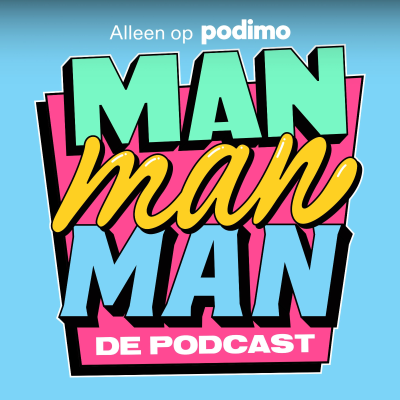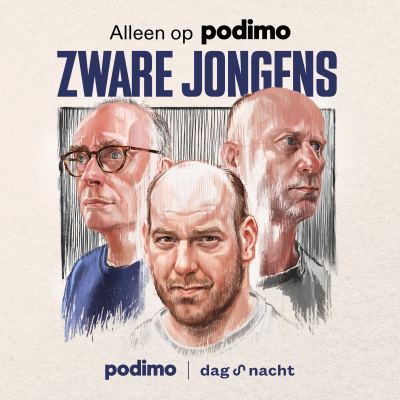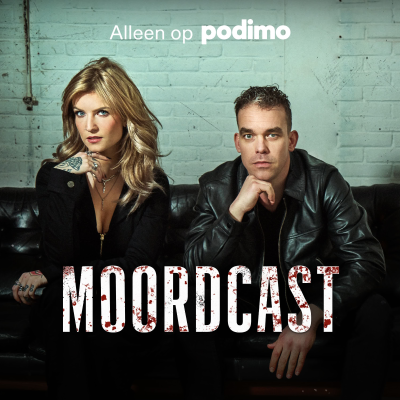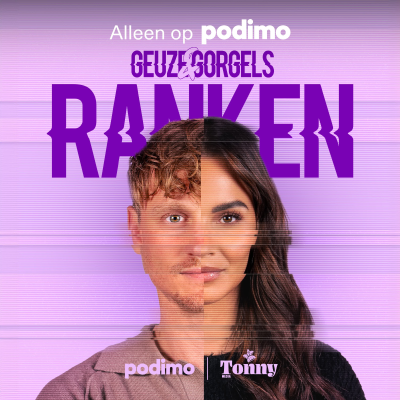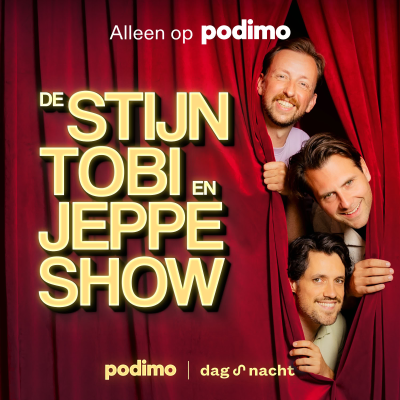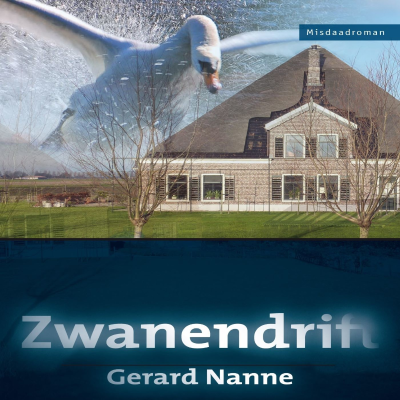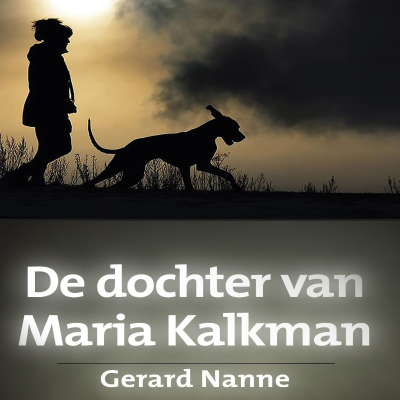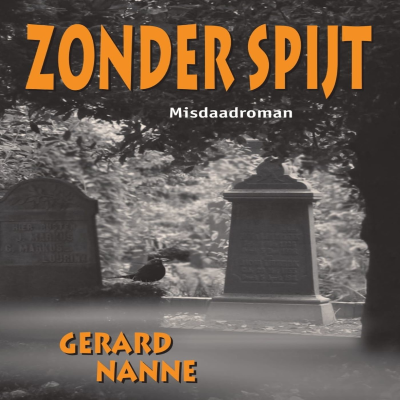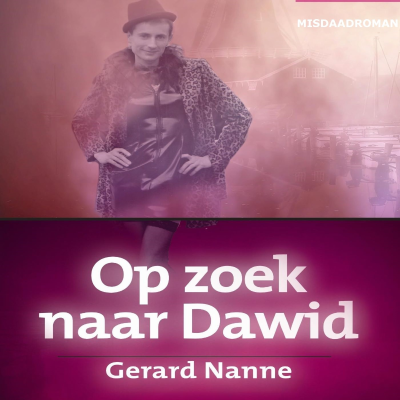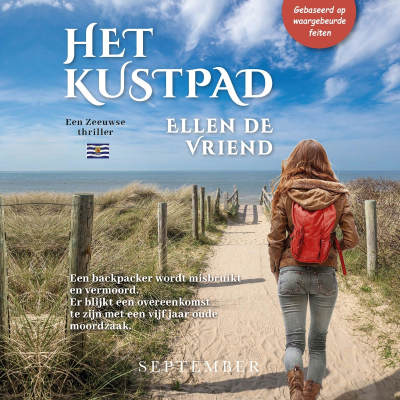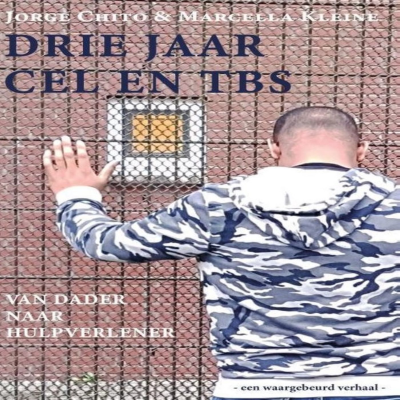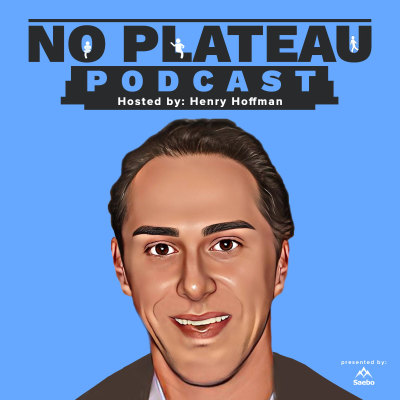
No Plateau Podcast
Engels
Technologie en Wetenschap
Tijdelijke aanbieding
3 maanden voor € 1
Daarna € 9,99 / maandElk moment opzegbaar.
- 20 uur luisterboeken / maand
- Podcasts die je alleen op Podimo hoort
- Gratis podcasts
Over No Plateau Podcast
Henry Hoffman, licensed Occupational Therapist and Co-founder of Saebo Inc., always believed there was no such thing as "plateauing" in stroke and traumatic brain injury recovery. When survivors stop seeing progress in their recovery journey, they're often told that they've "plateaued" and have no choice but to accept this reality. If you ask Hoffman, he'll tell you this – "It's not the patient that plateaus, it's their treatment options that do." It's why he co-founded his company Saebo (a medical device company focused on stroke and TBI rehab) on the mantra "No Plateau in Sight." So, how exactly can survivors keep pushing to overcome the fate of plateau? Hoffman is on a mission to speak to anyone and everyone out there defying the norm in neuro-rehab. This is the No Plateau Podcast – the podcast for stroke and brain injury survivors, their caregivers, and the therapists helping them to break boundaries in their recovery journey.
Alle afleveringen
25 afleveringenRestoring Movement vs. Adapting to Loss: Choosing the Right Path in Stroke Care with Amber Walter and Caitlin Wright
In this episode of the No Plateau Podcast, Henry Hoffman sits down with Amber Walter, Clinical Science Director, and Caitlin Wright, Occupational Therapy Advisor at Sheltering Arms Institute, to dig into one of the biggest debates in stroke rehab: should therapy focus on restoring movement, or teaching patients to adapt with compensatory strategies? But on the other hand, if therapy leans too much on compensation, are we robbing the brain of its chance to truly recover? Amber and Caitlin share how Sheltering Arms has taken a bold stance by committing to a neuro-restorative model of care, one built on intensity, technology, and outcome-driven practice. They talk about the science of neuroplasticity, the dangers of defaulting to one-handed strategies, and why therapists need to start planting seeds of recovery early, even for patients with the most severe deficits. Throughout the conversation, you’ll hear why high-repetition, evidence-based therapy matters, how technology extends what therapists can do, and why the future of stroke rehab depends on longer, more intensive sessions that focus on restoration, not just adaptation. In This Episode * Introduction to Caitlin Wright and Amber Walter (00:00) * The Importance of Neuroplasticity in Stroke Recovery (05:23) * Challenges in Current Stroke Rehabilitation Practices (07:25) * Sheltering Arms Institute: A New Approach (12:46) * Implementing Restorative Therapy at Sheltering Arms (15:05) * Technology and Evidence-Based Practices in Therapy (20:30) * Evaluating and Treating Stroke Patients (24:13) * Therapist Fatigue and Technology in Patient Recovery (31:44) * Critical Components for Severe Impairment Recovery (32:34) * Balancing ADLs and Intensive Therapy (35:31) * Historical Perspective on Rehabilitation (37:25) * Innovative Approaches in Modern Rehabilitation (38:35) * Case Study: Remarkable Patient Recovery (44:18) * Implementing Evidence-Based Practices (55:38) * Closing Thoughts and Recommendations (56:04) Our Guests Amber Walter, PT, DPT, NCS, is the Clinical Science Director at Sheltering Arms Institute in Richmond, VA. She oversees multiple therapy disciplines and specializes in translating research into everyday practice to improve outcomes for stroke and brain injury survivors. Caitlin Wright, MOT, OTR/L, is an Occupational Therapy Advisor at Sheltering Arms Institute. She is board-certified in physical rehabilitation and a certified brain injury specialist, with expertise in implementing neuro-restorative strategies to maximize recovery potential. Resources & Links * Sheltering Arms Institute Website [https://shelteringarmsinstitute.com/] * Amber Walter on LinkedIn [https://www.linkedin.com/in/amber-walter-28618aa5/] * Caitlin Wright on LinkedIn [https://www.linkedin.com/in/caitlin-wright-otd-atc-845729160/] * Henry Hoffman on LinkedIn [https://www.linkedin.com/in/henry-hoffman-01a09312/] * Saebo [https://www.saebo.com/?utm_source=podcast&utm_medium=saebo-podcast&utm_campaign=no-plateau-podcast] * On YouTube [https://www.youtube.com/user/SaeboInc] * On Instagram [https://www.instagram.com/saeboinc/] * On LinkedIn [https://www.linkedin.com/company/saebo-inc] * Saebo’s Stroke Caregiver Support Group [https://www.facebook.com/groups/423786023009376] * Saebo’s Stroke Survivor Support Group [https://www.facebook.com/groups/SaeboStrokeSupport] * Stroke Guidelines 2023 [https://www.ahajournals.org/doi/10.1161/STR.0000000000000436#:~:text=The%20%E2%80%9C2023%20Guideline%20for%20the,diagnose%2C%20and%20manage%20patients%20with]
Unlocking Hope for Vivistim Therapy: Bridging the Gap from “Not Yet” to “Approved” with Amanda Saylor
In this episode of the No Plateau Podcast, host Henry Hoffman is joined by Amanda Saylor, an occupational therapist specializing in neurological rehabilitation, to discuss Vivistim Therapy, a groundbreaking treatment for chronic stroke survivors with upper limb deficits. Vivistim combines vagus nerve stimulation (VNS) with intensive therapy to enhance neuroplasticity and improve arm and hand function. Amanda shares her experience implementing Vivistim in her clinic, the science behind the treatment, and how it can be integrated into stroke rehabilitation. "Vivistim is basically vagus nerve stimulation paired with therapy. It has to be—it cannot be one without the other."– Amanda Saylor This episode highlights the importance of combining innovative technology like Vivistim with evidence-based practices to push the boundaries of stroke recovery. For therapists and patients alike, Vivistim offers a new avenue for hope and progress in the journey toward recovery. "The success of Vivistim is only as good as the therapist that's going to be doing it. It’s the tool, but it’s the person behind the tool that makes the difference." – Henry Hoffman As Amanda and Henry discuss, the future of stroke rehabilitation lies in longer, more intensive therapy sessions and the integration of neurotechnology to enhance neuroplasticity. "Patients need more time in therapy. We know they need more repetitions, and they can't always get those on their own." – Amanda Saylor In This Episode * Introducing Vivistim Therapy (00:39) * Meet Amanda Saylor: Professional Background (01:17) * Understanding Neuroplasticity and Stroke Rehabilitation (02:58) * The Role of Task-Specific Training in Recovery (04:21) * Challenges and Innovations in Stroke Therapy (05:59) * Diving into Vivistim Therapy (06:54) * Clinical Trials and Outcomes of Vivistim (18:40) * Insurance and Reimbursement for Vivistim (26:19) * Navigating FDA Approval and Reimbursement (30:18) * Identifying Ideal Candidates for Vivistim (30:49) * Accessing Vivistim Treatment (33:32) * Training and Implementation for Therapists (35:10) * Case Studies: Success Stories and Strategies (37:38) * Future Directions and Recommendations (54:06) * Conclusion and Contact Information (57:56) Our Guest Amanda Saylor, MOT, OTR/L, is an occupational therapist with over eight years of experience specializing in neurological and orthopedic rehabilitation. She works at AdventHealth in Orlando, Florida, and is a consultant for MicroTransponder, the company behind Vivistim. Amanda is passionate about stroke rehabilitation and shares treatment ideas and tips on her Instagram page, @neuro_ots, with her colleague Becca Carr. Resources & Links * Advent Health Website [https://www.adventhealth.com/] * Vivistim Website [https://www.vivistim.com/] * Amanda Saylor on LinkedIn [https://www.linkedin.com/in/amanda-saylor] * Amanda Saylor’s Instagram [https://www.instagram.com/neuro_ots/] * * Henry Hoffman on LinkedIn [https://www.linkedin.com/in/henry-hoffman-01a09312/] * Saebo [https://www.saebo.com/?utm_source=podcast&utm_medium=saebo-podcast&utm_campaign=no-plateau-podcast] * On YouTube [https://www.youtube.com/user/SaeboInc] * On Instagram [https://www.instagram.com/saeboinc/] * On LinkedIn [https://www.linkedin.com/company/saebo-inc] * Saebo’s Stroke Caregiver Support Group [https://www.facebook.com/groups/423786023009376] * Saebo’s Stroke Survivor Support Group [https://www.facebook.com/groups/SaeboStrokeSupport] * Stroke Guidelines 2023 [https://www.ahajournals.org/doi/10.1161/STR.0000000000000436#:~:text=The%20%E2%80%9C2023%20Guideline%20for%20the,diagnose%2C%20and%20manage%20patients%20with]
The Educators’ Role in Translating Evidence into Practice with Jessica Schmidt
Are you or someone you know working towards recovery and looking for effective ways to break through barriers? In the world of rehabilitation, evidence-based practices are making a significant impact, especially within the field of occupational therapy. "We really have to take the time as educators to be willing to modify our courses, stay up to date on evidence, and make sure that we're using the best resources that are the most up to date." (17:45) - Jessica In today’s episode of the No Plateau Podcast, we delve into the integration of evidence-based practice in occupational therapy education and clinical settings from our own perspectives. We tackle the challenges of translating research into practice, including the delay between discovery and implementation and the hurdles we clinicians encounter in keeping abreast of new information. We cover the initiatives we're taking at Concordia University to improve evidence translation, the significance of clinical practice guidelines, and the role we play as fieldwork educators. We also engage in the debate over whether to focus on ADLs or neuroplasticity post-stroke and discuss the use of assessments like the Fugl-Meyer. We recommend the ViaTherapy app as a tool for evidence-based stroke rehabilitation, sharing our insights and experiences with it. "You can't get your arm and hand back if it's seven months, nine months, two years later; you missed a window. So focus on what matters the most, which is neuroplasticity." (24:25) - Henry In This Episode * The need for evidence-based learning (00:00:32) * Challenges in implementing evidence-based practice (00:05:27) * Strategies for speeding up evidence translation in education (00:11:11) * Dealing with outdated practices (00:22:20) * Adaptive techniques and neuroplasticity (00:24:21) * Barriers in implementing evidence-based strategies (00:31:22) * Accessing clinical practice guidelines (00:37:58) * Impairment-based outcome measures (00:45:12) * ViaTherapy App and free resources (00:49:32) Our Guest Jessica Schmidt, OTR/L is an assistant professor of occupational therapy at Concordia University of Wisconsin. She earned her master's from the University of Wisconsin-Milwaukee, and her post-professional doctorate in occupational therapy from Rocky Mountain University School of Health Professions. She is a member of ACRM, AOTA, and WOTA. In clinical practice, Jessica specialized in treating adult neurological patients in acute care and inpatient rehabilitation settings. She is passionate about evidence-based practice, helping translate research into the clinic, and preventing healthcare worker burnout. Resources & Links * Henry Hoffman on LinkedIn [https://www.linkedin.com/in/henry-hoffman-01a09312/] * Jessica Schmidt on LinkedIn [https://www.linkedin.com/in/jessica-schmidt-ms-otd-75b7a3137/] * * Saebo [https://www.saebo.com/?utm_source=podcast&utm_medium=saebo-podcast&utm_campaign=no-plateau-podcast] * On YouTube [https://www.youtube.com/user/SaeboInc] * On Instagram [https://www.instagram.com/saeboinc/] * On LinkedIn [https://www.linkedin.com/company/saebo-inc] * Saebo’s Stroke Caregiver Support Group [https://www.facebook.com/groups/423786023009376] * Saebo’s Stroke Survivor Support Group [https://www.facebook.com/groups/SaeboStrokeSupport]
Closing the Gap on Subluxation with Jenna Barber
What steps are necessary to establish a program for managing shoulder subluxations in a healthcare facility? In today’s episode, we dive into the topic of creating a stroke shoulder subluxation program in acute and subacute settings. This is a topic of interest for many therapists, yet it's often overlooked in most facilities. To shed more light on this topic, we are joined by Jenna Barber [https://www.linkedin.com/in/jennifer-barber-83906011a/], who has successfully created a subluxation program at her facility. “Most facilities are not preemptively addressing this issue. Why pass the buck to outpatient when you have the opportunity to attack it now?" During our discussion with Jenna, we debunk the effectiveness of slings and taping in reducing or preventing subluxation. Instead, we emphasize that strengthening exercises, particularly for patients with volitional movement, are the most effective approach. We also highlight the importance of proper electrode placement during electrical stimulation (e-stim) therapy, focusing on the posterior deltoid rather than the supra. We stress the importance of evidence-based practice and the need for therapists to be trained and competent in using e-stim therapy. "I don't know if I would change the program to maybe like shoulder e-stim program. I'm still debating on this one, but I really stressed in the beginning that it's not just shoulder subluxation, it's for those who don't have one yet to prevent one from happening." Jenna explains the implementation process of the subluxation program for stroke survivors at Froedtert. Patients are evaluated on day one or two after a stroke to determine if they would benefit from the program. Regardless of whether the patient currently has shoulder subluxation or not, they start them on the program to prevent it from happening. In This Episode * Introduction to Jenna and her subluxation program (02:08) * Subluxation and its effects (07:00) * Strengthening and electrical stimulation for subluxation mitigation (11:25) * Questioning the use of supra for shoulder subluxation treatment (12:19) * Jenna’s motivation to start the program (14:58) * The developmental process and challenges of starting a therapy program (17:00) * The synergy between nursing and therapist training in healthcare (20:45) * Contraindications for the subluxation program (24:29) * Managing the subluxation program at a large neuro hospital (30:20) * The waitlist issue (30:59) * Transition to subacute facilities (33:36) * Communication with subacute therapists (36:34) * How billing for unattended electrical stimulation contributes to therapist productivity (44:41) * Plans to expand the shoulder subluxation program (47:27) * The potential benefits of using tools like mirror boxes and mental practice (50:40) Our Guest Jenna Barber, MOT OTR/L, is an accomplished occupational therapist with a Bachelor's in Kinesiology from UW-Eau Claire and a Master's in Occupational Therapy from Concordia University Wisconsin. She excels at Froedtert & MCW, specializing in neuro and orthopedic conditions. Jenna is also an adjunct faculty member, recognized for exceptional patient care, and enjoys family time with her husband and two daughters. Resources & Links * Jenna Barber on LinkedIn [https://www.linkedin.com/in/jennifer-barber-83906011a/] * Stroke Guidelines 2023 [https://www.ahajournals.org/doi/10.1161/STR.0000000000000436#:~:text=The%20%E2%80%9C2023%20Guideline%20for%20the,diagnose%2C%20and%20manage%20patients%20with] * Henry Hoffman on LinkedIn [https://www.linkedin.com/in/henry-hoffman-01a09312/] * Saebo [https://www.saebo.com/?utm_source=podcast&utm_medium=saebo-podcast&utm_campaign=no-plateau-podcast] * On YouTube [https://www.youtube.com/user/SaeboInc] * On Instagram [https://www.instagram.com/saeboinc/] * On LinkedIn [https://www.linkedin.com/company/saebo-inc] * Saebo’s Stroke Caregiver Support Group [https://www.facebook.com/groups/423786023009376] * Saebo’s Stroke Survivor Support Group [https://www.facebook.com/groups/SaeboStrokeSupport]
The ABCs of ABT with Darci Pernoud
This week, we are talking about activity-based training, what it is, what the benefits are, and how this practice's guidelines and progress compares against stroke therapy and patients. Darci Pernoud is an OT going on 18 years and has immense experience working with spinal cord injury patients in her very own gym. This week on the No Plateau Podcast, she speaks with Henry about ABT, patient recovery, and current state of spinal injury treatment and technology. “A great deal has changed from where we are today than where we were 20, 30, 40 years ago. There is much more incomplete injuries, more people walking. I think it has a lot to do with continued research, continued thought process, how to push people hard. It's a very hot topic. I feel like right now in the rehab world is higher intensity pushing people harder to help create that change and drive home that neuroplasticity.” Darci wastes no time in emphasizing the importance of activity based training also known as ABT. The benefits of this therapy are numerous and the impact on patient recovery and healing is immense. “And so, by applying activity based therapy principles, that includes our health and wellness exercise measures, it's getting our bone density where it needs to be. It's getting our cardiovascular training where it is, it's getting our muscles stronger for resistance training, which is going to help with posture. So, it's going to help people look better. The benefits of exercise, getting circulation, getting all the right hormones, the growth factors, everything on a cellular level is going to be improved. So people are going to feel better, Their mental health is going to be better. That's going to affect their quality of life.” In This Episode * Darci Pernoud talks about her medical background (01:31) * What is spinal cord injury and what are some of the common impairments? (04:17) * Darci describing Activity Based Training in detail (10:56) * The five main pillars of Activity Based Training (13:26) * Was ABT in practice when she graduated in 2005? (16:17) * The current guidelines and care expectations in terms of standpoint of frequency, duration and time (19:13) * Comparing the treatment and care between spinal cord and stroke patients (22.55) * The average length of stay for a spinal cord patient (24:49) * What happens when patients are discharged from the hospital? (26:48) * The average onset post recovery for Independence Rehab clients (28:42) * Darci talks about ABT benefits and the recommended cardiovascular and resistance training (31:45) * How popular and accessible are ABT gyms? (38:39) * Discussing OT and PT equipment and technology (40:43) * The current state of progress for spinal cord patients potentially walking again (44:55) * Darci discusses the progress of one of her clients (46:04) * Thoughts of patients doing Activity Based Training virtually or remotely from home (48:20) * How people can reach Darci or learn more about ABT therapy (50:59) Our Guest Darci Pernoud has been an OT for over 18 years. She started out as a dual diagnosis therapist working in-patient rehab, and eventually went through a day program, an out-patient program, post-op work and upper extremity limb data collection work. She started networking with an activity based therapy gym which closed during Covid, prompting her to become a gym owner, trying to help the community’s experience of neurodiagnosis, assisting them in their recovery journey. Resources & Links * Darci Pernoud on Linkedin [https://www.linkedin.com/in/darci-pernoud-otd-5107a9131/] * Back to Independence Rehab [https://www.backtoindependencerehab.com/] * Henry Hoffman on LinkedIn [https://www.linkedin.com/in/henry-hoffman-01a09312/] * Saebo [https://www.saebo.com/?utm_source=podcast&utm_medium=saebo-podcast&utm_campaign=no-plateau-podcast] * On YouTube [https://www.youtube.com/user/SaeboInc] * On Instagram [https://www.instagram.com/saeboinc/] * On LinkedIn [https://www.linkedin.com/company/saebo-inc] * Saebo’s Stroke Caregiver Support Group [https://www.facebook.com/groups/423786023009376] * Saebo’s Stroke Survivor Support Group [https://www.facebook.com/groups/SaeboStrokeSupport]
Kies je abonnement
Tijdelijke aanbieding
Premium
20 uur aan luisterboeken
Podcasts die je alleen op Podimo hoort
Gratis podcasts
Elk moment opzegbaar
3 maanden voor € 1
Daarna € 9,99 / maand
Premium Plus
Onbeperkt luisterboeken
Podcasts die je alleen op Podimo hoort
Gratis podcasts
Elk moment opzegbaar
Probeer 30 dagen gratis
Daarna € 11,99 / maand
3 maanden voor € 1. Daarna € 9,99 / maand. Elk moment opzegbaar.


